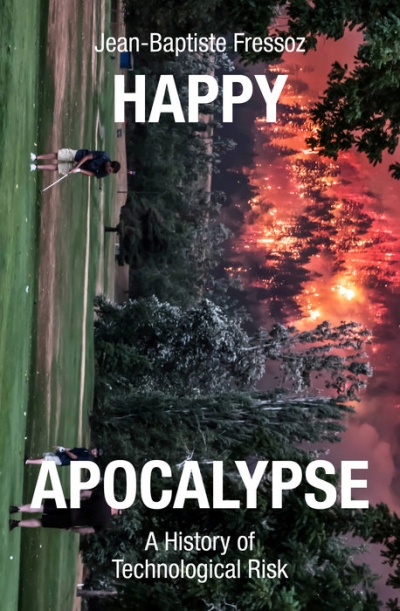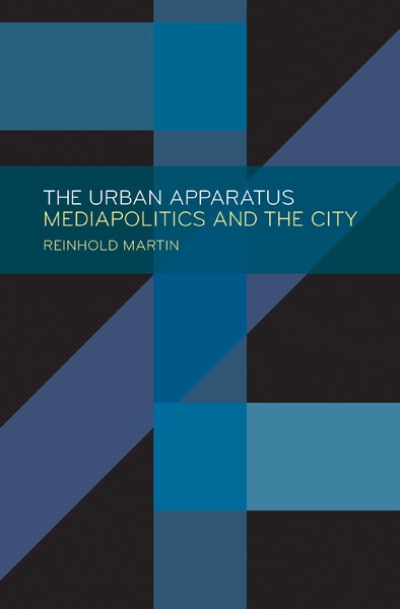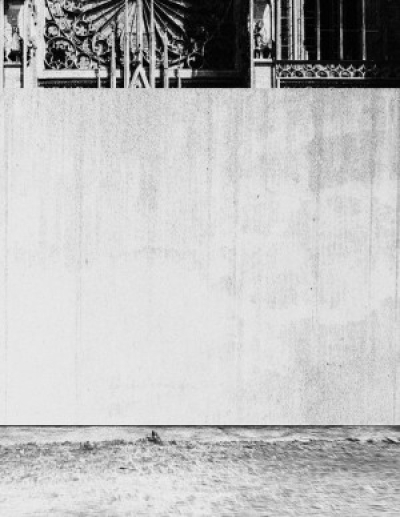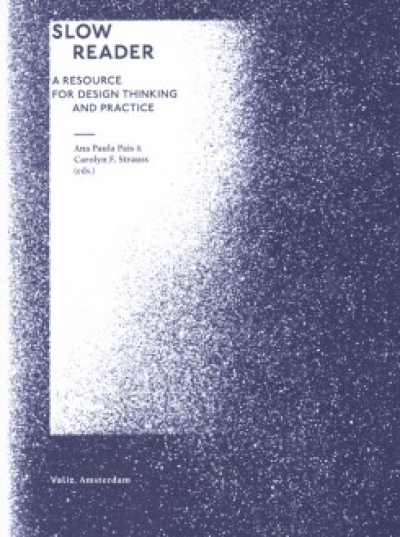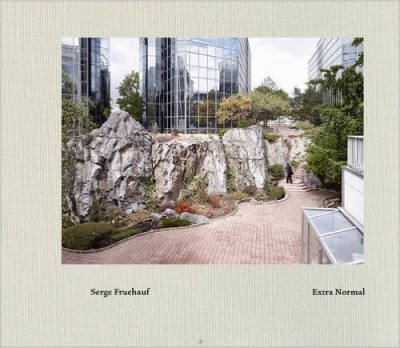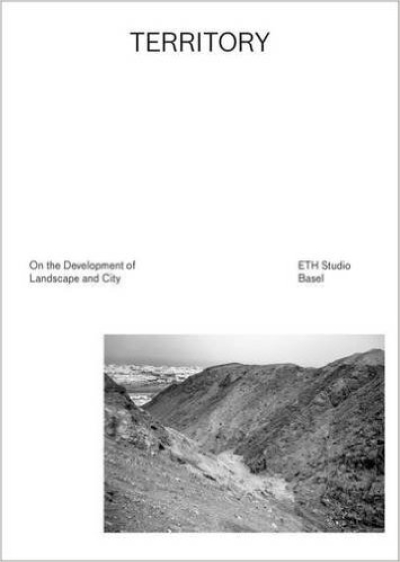gerade nicht auf Lager
Christopher Long
Adolf Loos on Trial
Brillembourg, Kalagas, Klumpner,…
Reactivate Athens
gerade nicht auf Lager
Etienne Turpin, Anna-Sophie Springer (…
The Word for World is Still Forest
gerade nicht auf Lager
S. Mohebbi, R. Estevez (Hg)
Hotel Theory Reader
U. Kleefisch-Jobst, P. Köddermann, K.…
Alle wollen wohnen: Gerecht. Sozial. Bezahlbar
gerade nicht auf Lager
Alain Badiou
The True Life
gerade nicht auf Lager
Hannah Black, Juliana Huxtable
Life. A Novel
gerade nicht auf Lager
Robert Barry
The Music of the Future
gerade nicht auf Lager
Clare Lyster
Learning from Logistics. How Networks Change our Cities
Aaron Betsky
Architecture Matters
gerade nicht auf Lager
Sönke Gau
Institutionskritik als Methode. Hegemonie und Kritik im…
David A. Hanks, Friedrich Meschede (Hg.)
Partners in Design: Alfred H. Barr Jr. und Philip Johnson.…
gerade nicht auf Lager
Alain Badiou/Pierre Bourdieu/Judith…
Was ist ein Volk?
gerade nicht auf Lager
Annette Michelson
On the Eve of the Future. Selected Writings on Film
James Voorhies
Beyond Objecthood. The Exhibition as a Critical Form since…
gerade nicht auf Lager
Alexander Vasudevan
The Autonomous City: A History of Urban Squatting
gerade nicht auf Lager
Kris Paulsen
Here/There. Telepresence, Touch, and Art at the Interface
gerade nicht auf Lager
Gerd de Bruyn
Theorie der modernen Architektur. Programmatische Texte
gerade nicht auf Lager
Sven Lütticken
Cultural Revolution: Aesthetic Practice after Autonomy
gerade nicht auf Lager
Martin Herbert
Tell Them I Said No
gerade nicht auf Lager
Deutscher Werkbund (Hg.)
Taut baut: Geschichten zur Architektur von Max Taut
gerade nicht auf Lager
Maria Hlavajova, Simon Sheikh (Eds.)
Former West: Art and the Contemporary after 1989
gerade nicht auf Lager
Jane Rendell
The Architecture of Psychoanalysis. Spaces of Transition
gerade nicht auf Lager
Sissi Tax
the looks, not the books (allaphbed '19)
Arnt Cobbers
Breuer
gerade nicht auf Lager
Mercedes Bunz, Birgit M. Kaiser,…
Symptoms of the Planetary Condition: A Critical Vocabulary
Marcus Verhagen
Flows and Counterflows. Globalisation in Contemporary Art
gerade nicht auf Lager
Andreas & Ilka Ruby
Infrastructure Space
gerade nicht auf Lager
Charlotte Ashby
Modernism in Scandinavia: Art, Architecture and Design
Kim Feser, Matthias Pasdzierny (Hg.)
Techno Studies. Ästhetik und Geschichte elektronischer…
Berliner Hefte zu Geschichte und…
Marx-Engels-Forum - Ja!
Yvonne P. Doderer
Glänzende Städte. Geschlechter- und andere Verhältnisse in…
Europan 13
The Adaptable City 2: Ergebnisse /Results
gerade nicht auf Lager
Erik Kessels
Fast Pefrekt. Die Kunst, hemmungslos zu scheitern. Wie aus…
C. Perren, S. B. Lovett (Eds.)
Expanded Architecture. Temporal Spatial Practices
gerade nicht auf Lager
M. Holm, K. Kjeldsen, M. Kallehauge (…
Wang Shu. Amateur Architecture Studio
gerade nicht auf Lager
Yuk Hui
The Question Concerning Technology in China. An Essay in…
gerade nicht auf Lager
Eva Birkenstock (Hg.)
KAYA. KUB Arena Vol. 4: Ausst. Kunsthaus Bregenz 2015
Brian Massumi, Krystian Woznicki
After the Planes. A Dialogue about Movement, Perception and…
gerade nicht auf Lager
&beyond (Eds.)
Archifutures Volume 1: The Museum. A Field Guide to the…
gerade nicht auf Lager
Diedrich Diederichsen
Körpertreffer. Zur Ästhetik der nachpopulären Künste
Gertrud Koch (Autorin) Judith Keilbach…
Zwischen Raubtier und Chamäleon. Texte zu Film, Medien,…
Siegfried Kracauer (Author), Carl…
Georg
gerade nicht auf Lager
Katherine Behar (Ed.)
Object-Oriented Feminism
gerade nicht auf Lager
Hilary Sample
Maintenance Architecture
gerade nicht auf Lager
Chris Kraus
I Love Dick
gerade nicht auf Lager
John R. Gold
The Practice of Modernism: Modern Architects and Urban…
Peggy Deamer, Martin Reinhold
Architekturen unserer Arbeit
gerade nicht auf Lager
Gabriele Köster, Michael Stöneberg
Bunte Stadt - Neues Bauen: Die Baukunst von Carl Krayl
gerade nicht auf Lager
B. von Bismarck, B. Meyer-Krahmer
Hospitality: Hosting Relations in Exhibitions (Cultures of…
gerade nicht auf Lager
Stephan Trüby
Absolute Architekturbeginner. Schriften 2004-2014
gerade nicht auf Lager
Armen Avanessian
Miamification
gerade nicht auf Lager
Liliane Wong
Adaptive Reuse. Extending the Lives of Buildings
Jeremy Deller
Iggy Pop Life Class
gerade nicht auf Lager
Vanessa Miriam Carlow, Institute for…
Ruralism. The Future of Villages and Small Towns in an…
gerade nicht auf Lager
Rainer Hehl, Ludwig Engel (eds.)
Berlin Transfer. Open Living Structures
gerade nicht auf Lager
Andreas Quednau, Sabine Müller
SMAQ. Giraffes, Telegraphs, and Hero of Alexandria. Urban…
gerade nicht auf Lager
Daniela Sandler
Counterpreservation. Architectural Decay in Berlin Since…
gerade nicht auf Lager
Jennie Gottschalk
Experimental Music Since 1970
gerade nicht auf Lager
IDEA Magazine
IDEA 376. Graphic Designers and Exhibitions
Martin Lehnen
Opus Moderne. Die Wand aus glatt geschaltem Sichtbeton
gerade nicht auf Lager
Samuel Bianchini, Erik Verhagen (eds.)
Practicable. From Participation to Interaction in…
Achim Valbracht (Hg.)
Das neue Grab
gerade nicht auf Lager
Haubitz + Zoche
Hybrid Modernism. Movie Theatres in South India
Christian Berkes (Ed.)
Welcome to AirSpace. On Airbnb, Uber, Facebook,..
gerade nicht auf Lager
Nick Srnicek
Platform Capitalism
gerade nicht auf Lager
Catherine Ince, Lotte Johnson (Hg.)
Die Welt von Charles und Ray Eames
David Brody
Housekeeping by Design. Hotels and Labor
gerade nicht auf Lager
Rolf Lindner
Berlin, absolute Stadt. Eine kleine Anthropologie der…
gerade nicht auf Lager
Matteo Ghidoni
Fundamental Acts. Life, Education, Ceremony, Love, Death
gerade nicht auf Lager
Yasminah Beebeejaun
The Participatory City
Deyan Sudjic
The Language of Cities
gerade nicht auf Lager
Donna Haraway
Das Manifest für Gefährten: Wenn Spezies sich begegnen -…
gerade nicht auf Lager
Oliver Hartung
Iran. A Picture Book
gerade nicht auf Lager
Turit Fröbe
Die Inszenierung eines Mythos. Le Corbusier und die…
Peter Allison (Ed.)
David Adjaye. Constructed Narratives
gerade nicht auf Lager
Neil Brenner
Critique of Urbanization. Selected Essays
gerade nicht auf Lager
Francis Kéré
Radically Simple
gerade nicht auf Lager
Caroline Maniaque-Benton(Ed.)
Whole Earth Field Guide
gerade nicht auf Lager
Matthew Tempest, Simon Phipps, Derek…
Modern Berlin Map: Guide to 20th Century Architecture in…
gerade nicht auf Lager
Thomas Meinecke
Selbst
Reinhold Martin
The Urban Apparatus. Mediapolitics and the City
gerade nicht auf Lager
Pier Vittorio Aureli, Maria Sheherazade…
Rituals and Walls: The Architecture of Sacred Space
gerade nicht auf Lager
Olaf Bahner, Matthias Böttger (Hg.)
Neue Standards. Zehn Thesen zum Wohnen
Hans Dickel
Natur in der zeitgenössischen Kunst. Konstellationen…
gerade nicht auf Lager
Baier, Hansing, Müller, Werner (Hg.)
Die Welt reparieren: Open Source und Selbermachen als…
gerade nicht auf Lager
A. P. Pais, C.F. Strauss (eds)
Slow Reader: A Resource for Design Thinking and Practice
gerade nicht auf Lager
Nina Paim
Taking a Line for a Walk: Assignments in design education
gerade nicht auf Lager
Helmut Draxler
Abdrift des Wollens. Eine Theorie der Vermittlung
gerade nicht auf Lager
Christian Schittich (Ed.)
Wohnkonzepte in Japan / Housing in Japan: Typologien für…
gerade nicht auf Lager
Joost Grootens
Elemental Living. Contemporary Houses in Nature
gerade nicht auf Lager
Joerg Bader (Hg.)
Serge Fruehauf. Extra Normal
gerade nicht auf Lager
Contemporary City Institute ETH Studio…
Territory: On the Development of Landscape and City
gerade nicht auf Lager
Barbara Vinken
Die Blumen der Mode. Klassische und neue Texte zur…
gerade nicht auf Lager
Donna J. Haraway
Staying With the Trouble: Making Kin in the Chthulucene
gerade nicht auf Lager
Anna-Sophie Springer, Etienne Turpin (…
Fantasies of the Library
gerade nicht auf Lager
Henry Plummer
The Experience of Architecture
gerade nicht auf Lager
Aberrant Architecture
Wherever You Find People: The Radical Schools of Oscar…
